Greg Cosell's NFL draft preview: Dalvin Cook has good NFL skills, but might not be a foundation back
You’ll see a lot of comparisons between now and the draft between LSU‘s Leonard Fournette and Florida State‘s Dalvin Cook, because they’re considered the top two backs in this year’s draft.
I wonder if that’s the wrong comparison. Perhaps the better comparison for Cook is Stanford’s Christian McCaffrey.
Cook isn’t an NFL foundation back, like Fournette is. He doesn’t possess the power needed to be a foundation back, in my opinion. That doesn’t mean Cook won’t be a good NFL player, I just don’t think he’s the type of back you run your offense through.
In a changing NFL, there’s a difference between a “foundation back” and a “primary back.” A foundation back is one an offense is built around. If the New York Jets with the sixth overall draft pick want a running back to be the focus of the offense with 350 carries because of their shaky quarterback play, Fournette is the choice. Think about high-volume backs like Ezekiel Elliott, or DeMarco Murray – they’re foundation backs. Teams like the Philadelphia Eagles or New York Giants run a lot of “11” personnel (one back, one tight end, three receivers) and their primary backs will be on the field maybe 70 percent of the time with about 220 carries and 50 catches. That’s where Cook is better suited.
Cook is a very good player with good NFL traits. But he has to be in the right system with the right utilization. Cook’s best NFL comparison could be Atlanta Falcons running back Devonta Freeman. Freeman had 227 carries and 54 catches last season (and was a fourth-round pick). Freeman can hit big plays in the running game and passing game. If Cook develops into a Freeman-type player, the team that drafts him should be very happy.
Just because I don’t think Cook is a foundation back like Fournette or Elliott doesn’t mean I don’t like him as a player. He has good skills and a lot of talent. Even if he’s a back who plays 60-70 percent of the snaps, which he’s best suited for, that has great value in today’s NFL.
In the right system he can be a good player.
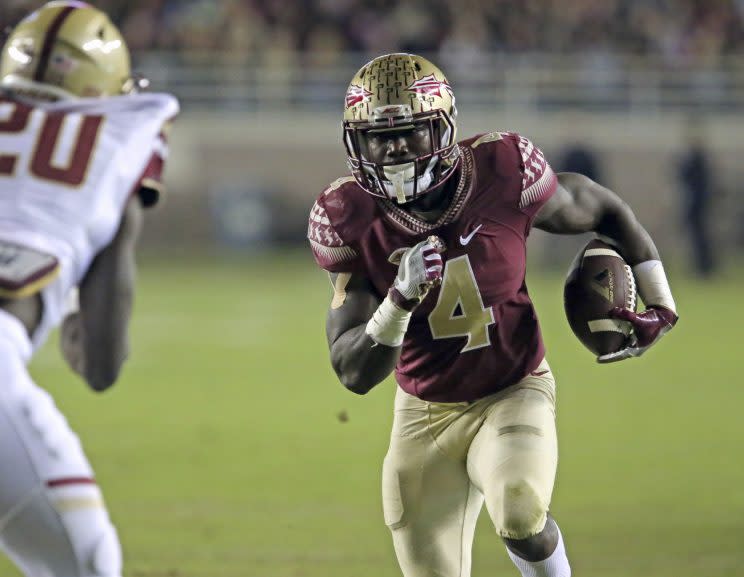
Here’s what I see as Cook’s strengths and weaknesses:
STRENGTHS
Cook has shown the ability to create in confined space, and that’s key for any NFL runner. He’s a loose-hipped, change-of-direction runner with quick, active, live feet. He’s a slasher and a darter who has explosive short-area burst with subtle shiftiness, very good balance and body control with stop-and-start quickness.
On this 54-yard outside zone run against Miami, you can see his subtle shiftiness with the ability to work through traffic.
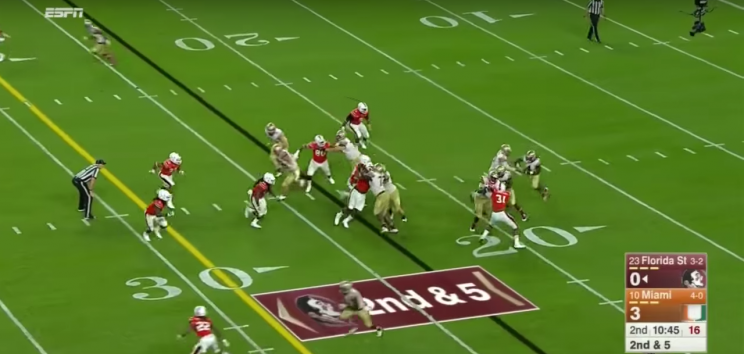
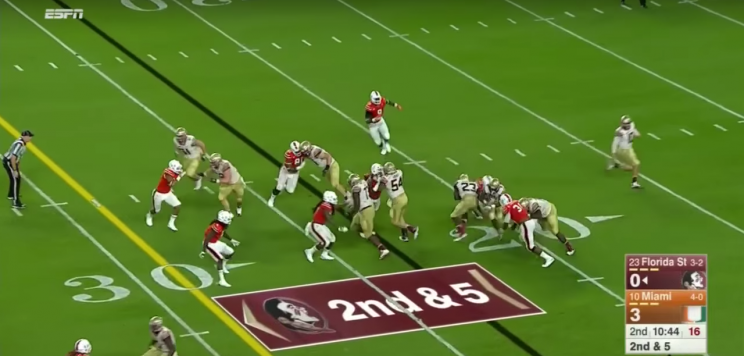
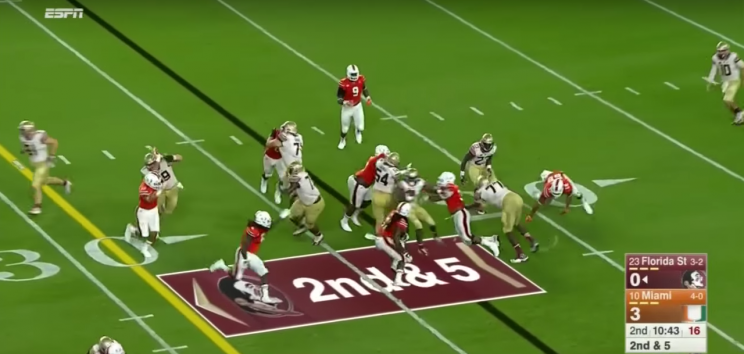
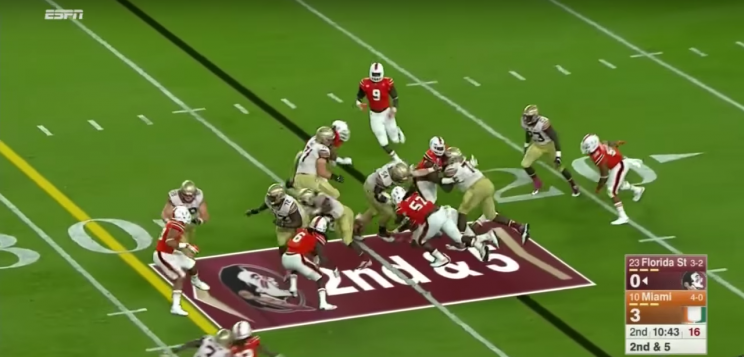
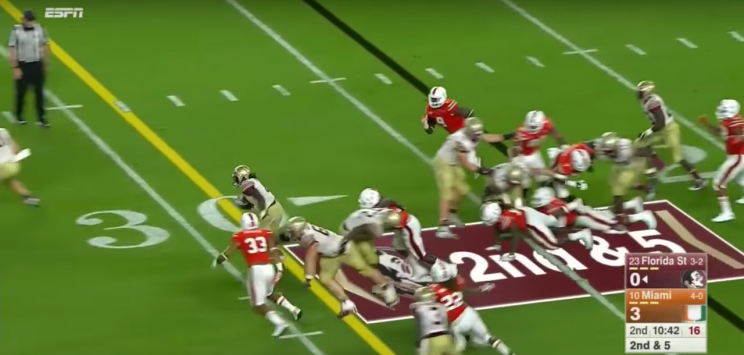
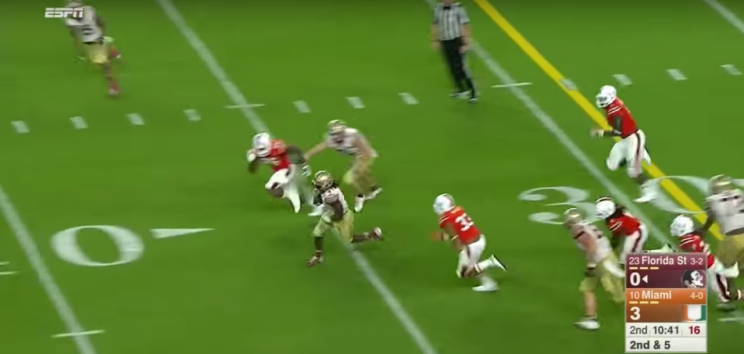
I like Cook’s smooth, fluid, easy movement with burst and acceleration. On this 70-yard touchdown against Clemson, a counter run out of the pistol formation, he showed an ability to bounce and out-flank the defense.
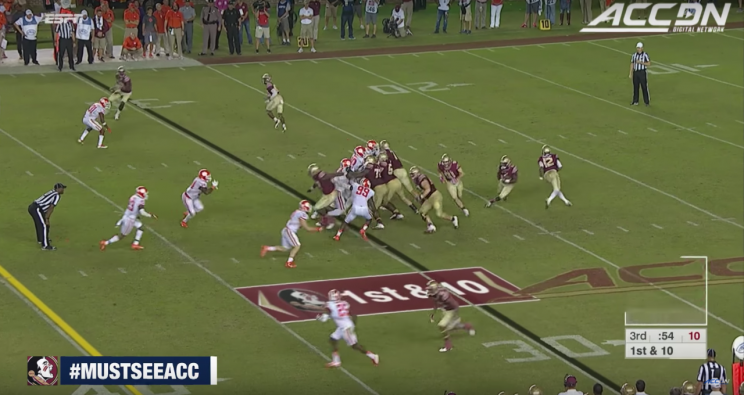
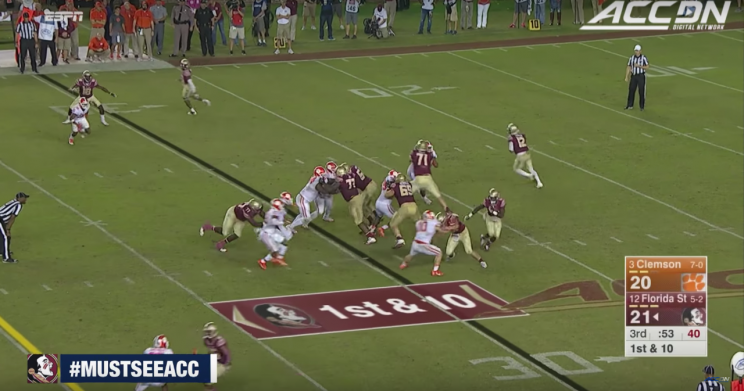
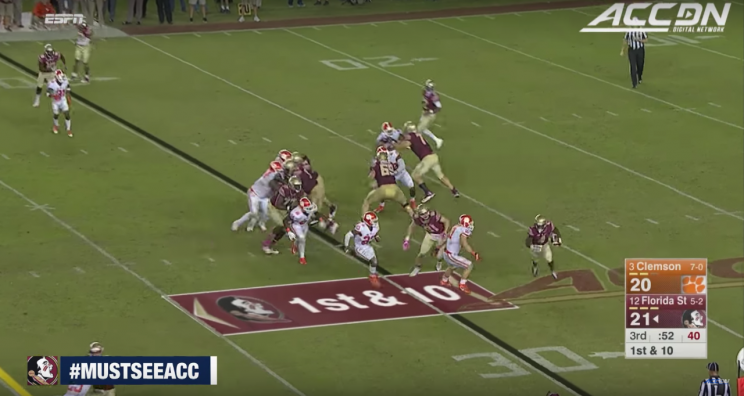
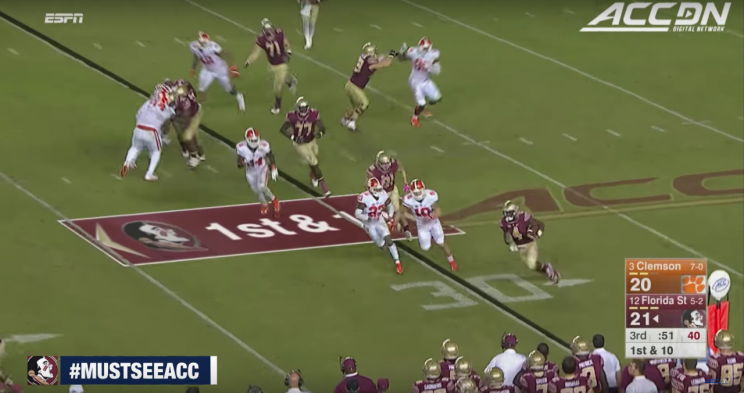
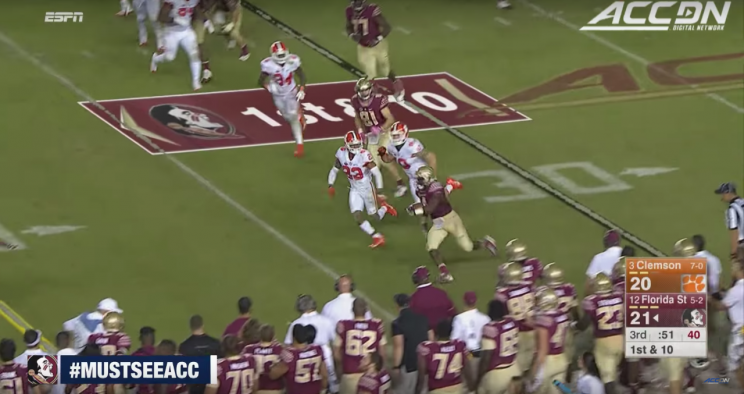
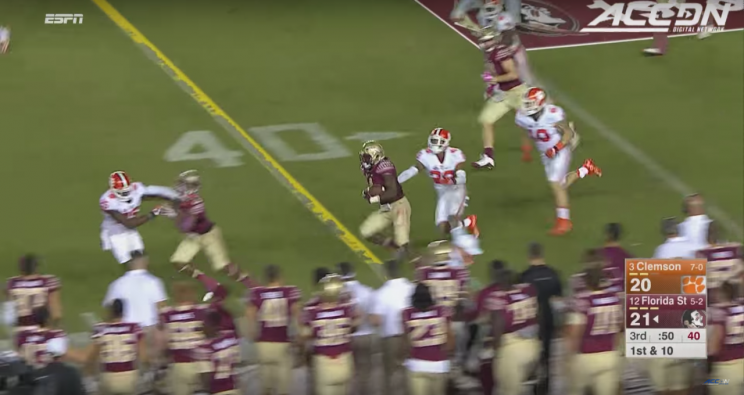
Here we see an iso lead run against Florida, and Cook demonstrates vision, lateral quickness and instant acceleration.
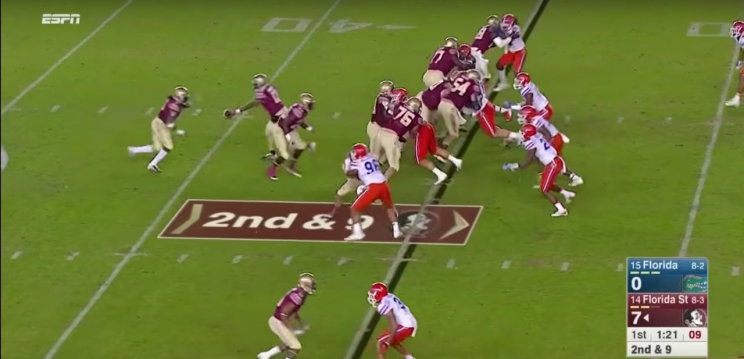
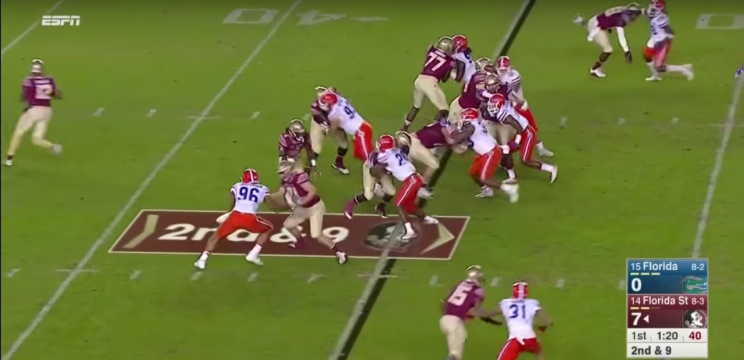
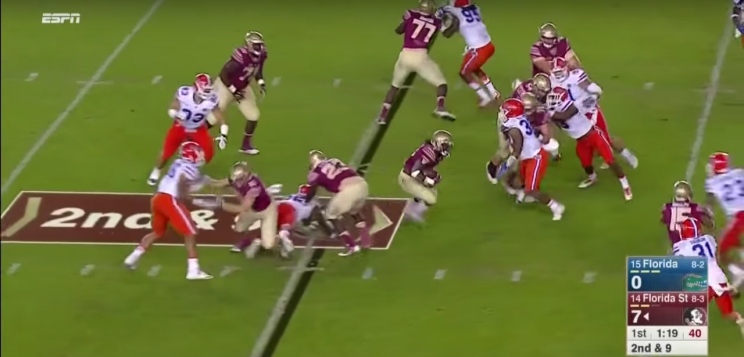
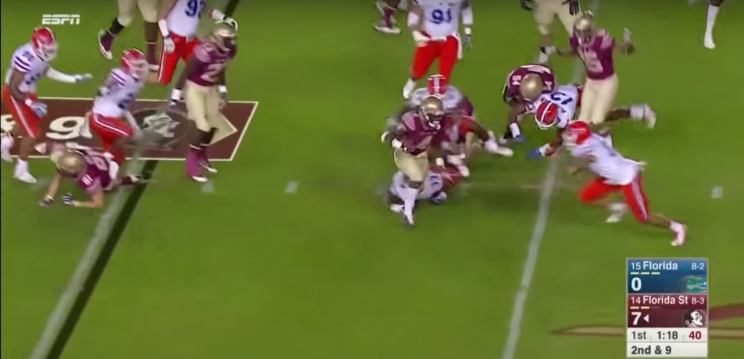
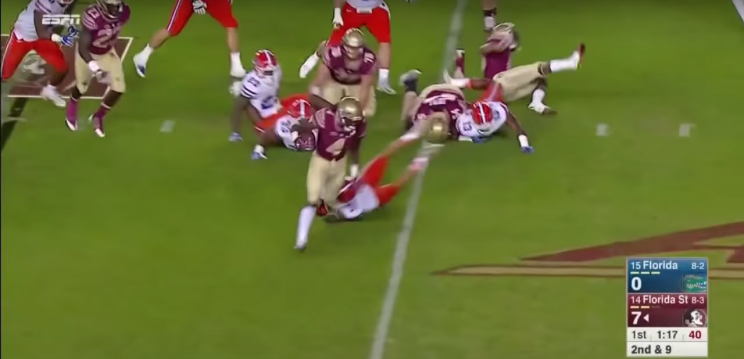
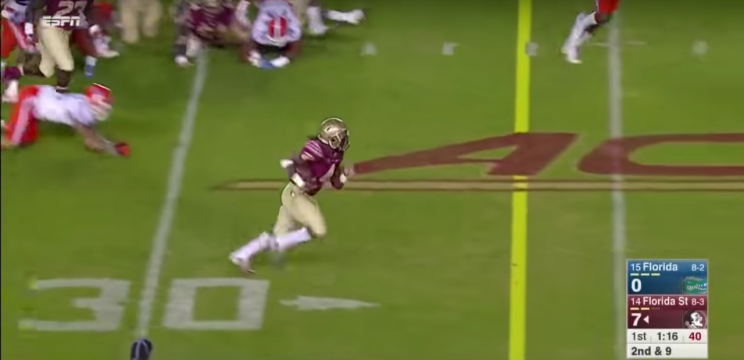
At times Cook ran with toughness inside, and he had strong downhill instincts, consistently attacking the line of scrimmage. I like that he had discipline and understood blocking schemes and reading the blocks effectively. As a receiver, you didn’t see him run the whole route tree (like you do with McCaffrey), but he showed the hands to be an effective receiver at the intermediate and deep levels.
WEAKNESSES
People I know and respect disagree about Cook’s power as a runner. I don’t think he’s powerful enough to be a foundation back, as I stated above, though others disagree. There’s a difference between running physically and running powerfully, and tough running is not the same as power running. Cook runs hard, but he can’t move people at the point of attack (as Fournette has shown he can do).
Cook had a tendency at times to run a little high, and at times he braced for contact on inside runs. That’s a concern.
Cook is also not as shifty and elusive as you’d ideally like. He’s not as dynamic, for lack of a better term, as Freeman or a LeSean McCoy. And while his average combine doesn’t change my view of him as a player, I was surprised. I was surprised to see that Fournette’s 10-yard split in the 40-yard dash was better than Cook’s, considering Fournette is 30 pounds bigger.
There’s also question about Cook as a receiver. Can he detach from the formation and be a weapon that way? He was utilized almost exclusively at Florida State on routes out of the backfield, like angle routes. It’s not that he is incapable of lining up at different spots in the formation as a receiver, but we haven’t seen it yet.
Here is one of the times he lined up outside the numbers: A 45-yard catch against Michigan in which he lined up wide left and beat the linebacker on a straight go route.
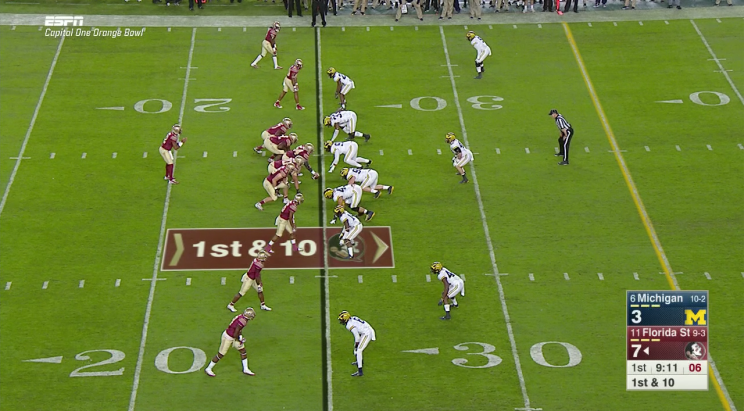
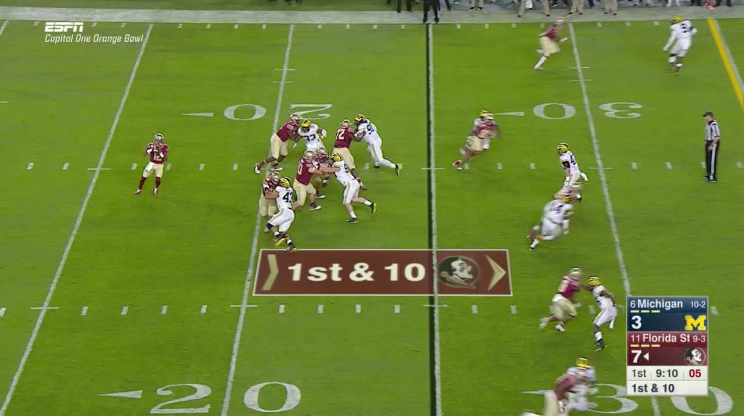
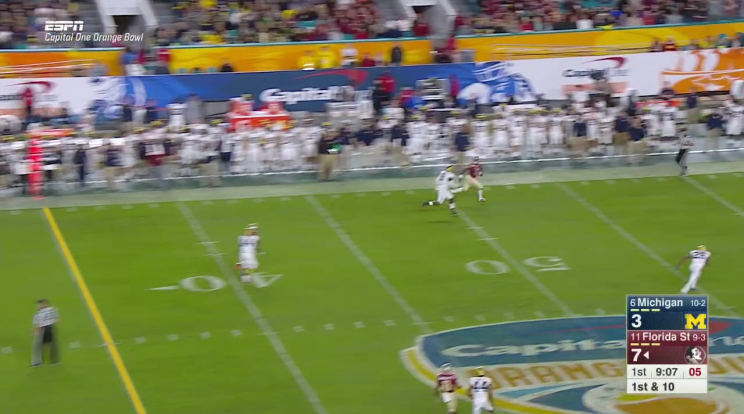
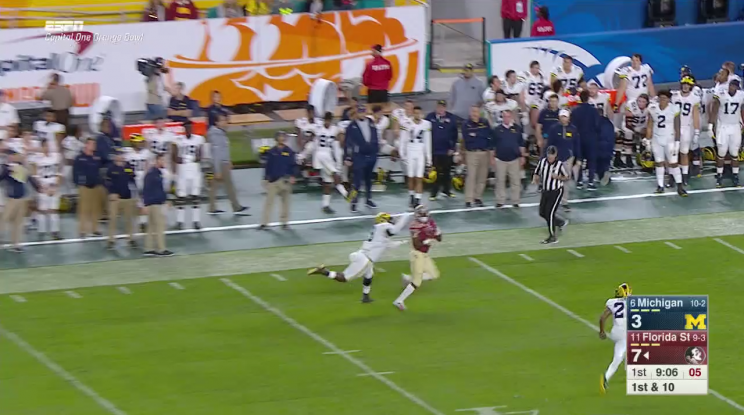
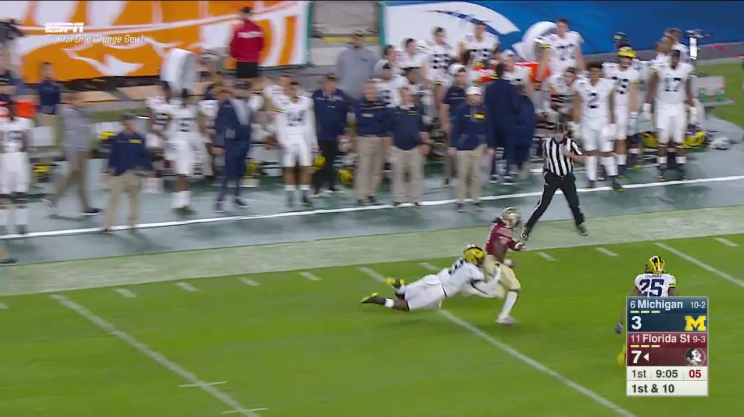
If he can do that consistently, it adds to his NFL value.
TRANSITION TO NFL
There will be some disagreements on how Cook should be best deployed, but the assumption is he’ll be a first-round pick. People will see Cook running all the NFL runs, like power and counter, and think he can be a back a team can run its offense through. It’s questionable if he can do that on a weekly basis. That doesn’t mean there won’t be weeks in which he’ll carry the ball 20-plus times, but I don’t believe you start your offense with him.
It comes down to scheme adaptability because he’s a totally different runner than Fournette. Can he line up in the I-formation and be the foundation of an offense that is built on a base personnel/base foundation run game? I don’t see him as that type of back. But he has a lot of talent and good traits, particularly running the ball, and will be a valuable player for whichever team drafts him.
More NFL draft breakdowns from Greg Cosell:
• Clemson QB Deshaun Watson
• North Carolina QB Mitchell Trubisky
• Notre Dame QB DeShone Kizer
• Texas Tech QB Patrick Mahomes and Cal QB Davis Webb
• LSU RB Leonard Fournette
• Stanford RB Christian McCaffrey
• Oklahoma RB Joe Mixon
– – – – – – –
NFL analyst and NFL Films senior producer Greg Cosell watches as much NFL game film as anyone. Throughout the season, Cosell will join Shutdown Corner to share his observations on the teams, schemes and personnel from around the league.



